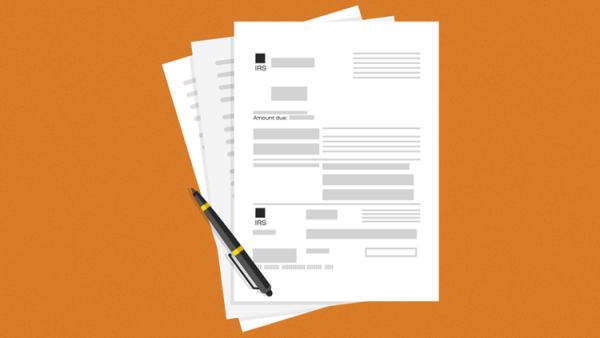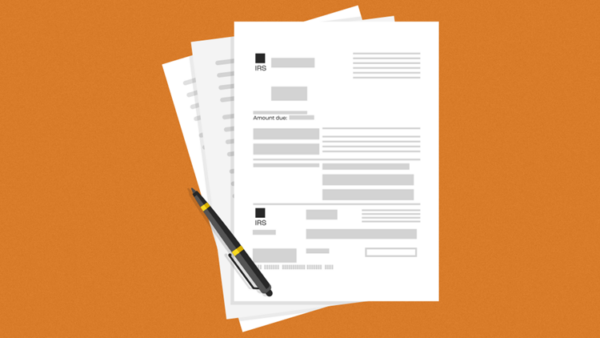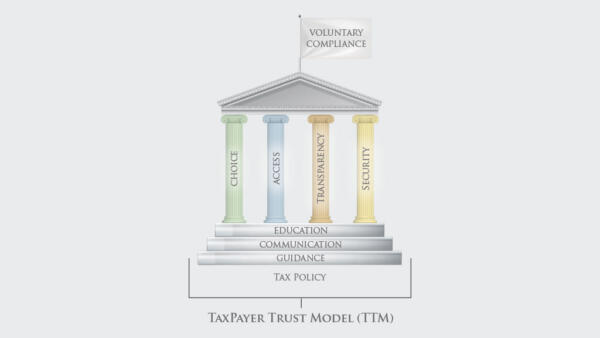
by Taxing Subjects | Aug 25, 2023 | Tax Tips and News
As recovery efforts are underway for victims of the devastating wildfires in Hawaii, the Internal Revenue Service is moving to give survivors one less thing to worry about.
The agency has launched its tax relief package for victims in Maui and Hawaii counties that basically delays an array of federal individual and business tax deadlines until February 15, 2024.
Relief is available to any taxpayer who lived or operated a business within the federal disaster declaration issued by the Federal Emergency Management Agency (FEMA). A list of towns and other localities currently included is available on the disaster relief page of the IRS.gov website.
Wildfire Victims Have Until February 15 to file 2022 Returns and Pay Tax Due.
The postponement period covers a wide range of filing and payment deadlines that would otherwise have occurred between August 8 of this year and the new deadline of February 15, 2024.
The new 2024 deadline includes:
- Taxpayers with a valid extension that is due to expire on Oct. 16, 2023. It should be noted, however, that since payments for 2022 tax due were required before the wildfire event, those payments aren’t covered by the new 2024 deadline.
- Quarterly estimated income tax payments normally due on Sept. 15, 2023, and Jan 16, 2024.
- Quarterly payroll and excise tax tax returns that otherwise would have been due on Oct. 31, 2023, and Jan. 31, 2024.
- Calendar-year partnerships and S corporations with 2022 extensions due to expire Sept. 15.
- Calendar-year partnerships with 2022 extensions due to expire on Oct. 16.
- Calendar-year tax-exempt organizations with extensions expiring on Nov. 15.
- Business taxpayers should remember that penalties for failure to make required payroll and excise tax deposits between Aug. 8 and Sept. 7 are abated, as long as deposits are made by Sept. 7.
Complete details are available on other returns and payments on the Disaster Assistance and Emergency Relief for Individuals and Businesses page on the IRS website.
Relief Package Also Covers Others Affected by the Disaster.
What about others who are affected by the fires, but aren’t residents of the disaster area? Consider the case of a taxpayer who lives outside the disaster area but lost the records necessary to meet a tax deadline in the disaster. These victims should call the IRS at 866-562-5227 to find out what relief the agency may have available for them.
Conversely, taxpayers who live within the federal disaster area do not need to call the IRS in order to qualify for the tax relief package. The IRS says benefits are tied to the taxpayer’s address of record on file with the agency, and so are enabled automatically when their returns are received.
In some cases, taxpayers may not have an address of record on file with the agency, because, for example, they may have moved into the disaster area after they filed their return. Due to circumstances, these taxpayers could find a late-filing or late-payment notice in their mailbox. These taxpayers should call the phone number stated on their printed notice letter to get the penalty abated, per the IRS.
Filing After the Fire Explained.
When it comes down to how to claim their losses on a tax return, it is the taxpayer’s choice.
Individual and business taxpayers within the federal disaster area can claim their uninsured or unreimbursed losses from the disaster in one of two ways. The loss can be claimed on the return for the year the loss occurred (in this case, on the 2023 return, normally filed in 2024) or on the return for the prior year, which would be 2022.
Any return claiming a disaster loss should have the FEMA declaration number, DR-4724-HI, displayed on the return. For more details on claiming a loss, check out Publication 547.
In general, qualified disaster relief payments are excluded from gross income. This usually means money received from a government agency for reasonable and necessary expenses, whether personal, family, living or funeral expenses, for repair or rehabilitation of a home, or for repair or replacement of a home’s contents.
More information on disaster payments is available in IRS Publication 525 on the IRS website.
Source: IRS: Hawaii wildfire victims qualify for tax relief; Oct. 16 deadline, other dates postponed to Feb. 15
– Article provided by Taxing Subjects.

by Taxing Subjects | Aug 15, 2023 | Tax Tips and News
The 2023 Software Survey conducted by the National Association of Tax Professionals (NATP) unveils insightful findings regarding tax professionals’ experiences with their chosen tax preparation software. Covering attributes ranging from reliability to customer support, the survey provides a comprehensive view of the quality of service users can anticipate from the different software platforms.
In the NATP 2023 Software Survey which uses a scale of 1 to 5, Drake Software received 4 stars and above in every survey category. Drake claimed an impressive Net Promoter Score rating of excellent and received standout rankings:
- Overall Satisfaction: 4.5
- Software conversion package: 4.3
- Software compatibility with user network: 4.5
- Reliability of software: 4.5
- Reasonable price: 4.5
- Ease of software installation: 4.75
- Ease of learning software: 4.5
- Ease of working with software: 4.5
- Ease of reviewing tax returns: 4.5
- Ease of e-filing: 4.75
- Timely software updates after federal tax law changes/updates: 4.75
- Timely software updates after state law changes/updates: 4.5
- Technical support from software company: 4.4
- Customer service from software company: 4.5
- Accuracy of software in regards to federal tax law: 4.6
- Accuracy of software in regards to state law: 4.25
Drake Software users made up an astounding 41% of the survey respondents; the next highest was 15%. We are so grateful to everyone who participated and shared their experiences. We are proud to stand by our industry-wide reputation for delivering award-winning tax preparation solutions, from comprehensive tax preparation software to seamless software conversion and ease of use.
For more information on tax preparation solutions from Drake Software, visit our Products page or download a Free Trial today.
Source: NATP 2023 Software Survey
– Article provided by Taxing Subjects.
![2023 Contactless Tax Preparation [Infographic]](https://www.ecstaxservice.com/wp-content/uploads/2023/08/ts-6906_2023_infographic_contactless-tax-prep-survey-blog.png)
by Taxing Subjects | Aug 9, 2023 | Tax Tips and News
Is contactless tax preparation the future of the industry?
While the 2020 filing season jettisoned the tax industry into a virtual arena, the 2023 season seems to indicate that contactless tax preparation has some staying power as tax professionals continue to adapt to the needs and preferences of their clients.
Drake Software has been keeping an eye on the contactless prep trend through a yearly survey of tax professionals. More than 900 participants from tax offices around the nation (including attorneys, CPAs, EAs, and preparers) shared their preferences and insight in the 2023 Contactless Tax Preparation survey.
Participants answered more than 20 questions addressing topics such as the following:
- Client interest in no-contact, completely virtual preparation
- Client-facing portal systems
- The number of returns prepared with no in-office contact
- Preparer interest in providing contactless services post-pandemic
For the results, download the Drake Software 2022 Contactless Tax Preparation Infographic.
– Article provided by Taxing Subjects.

by Taxing Subjects | Aug 5, 2023 | Tax Tips and News
The Internal Revenue Service says it has constructed a blueprint for its future called the Paperless Processing Initiative. The plans are aimed at eliminating up to 200 million pieces of paper every year, while cutting processing times in half and speeding up refunds by weeks. The agency says it will realize these benefits by fully embracing digital filing and processing – the sooner, the better. The plan is a two-step process with work starting now and extending past filing season 2026. It’s funded by the Inflation Reduction Act.
When it comes to speeding up the taxpaying process, paper is the enemy.
Every year, the IRS gets about 76 million paper tax returns and forms, and another 125 million pieces of correspondence. Each one of those pieces of paper requires a human being to enter its information into the IRS computer systems.
This process can lead to a filing logjam as outside of the annual 1040 tax return and a relatively few other forms, taxpayers are currently limited to sending in forms and correspondence to the IRS on paper. Meanwhile, the agency can’t digitally process the mountain of paper it gets. In fact, just storing the paper returns and correspondence the agency receives costs a tidy $40 million every year. The plan is to push all tax filing into the digital world, and to devise a system to automatically scan any paper documents on arrival.
Step One: Taxpayers Can Go Paperless in Filing Season 2024
The first step is a big one in itself: taxpayers will be able to send all their correspondence, non-tax forms, and notice responses to the IRS in digital form. This may appear to be a small action, but it will take millions of paper documents out of the processing backlog every year. The IRS estimates that this initial step alone will mean some 94% of individual taxpayers will no longer ever need to send a piece of mail to the agency.
Some 20 additional tax forms, meanwhile, will be added to the digital availability list. This will include amendments to Forms 940, 941, and 941SSPR. The most popular non-tax forms – at least 20 of them – will also be moved over into the digital world and optimized for mobile devices. This includes the Request for Taxpayer Advocate Service Assistance.
Note, however, that in this first phase taxpayers who have a need to file a paper form or send paper correspondence may still do so.
Step Two: IRS Starts Paperless Processing for Tax Returns in Filing Season 2025.
In this phase, the IRS takes aim at the avalanche of paper it receives, whether tax forms or correspondence.
The agency timeline calls for all paper-filed tax and information returns to be digitally processed on arrival. Half of all non-tax forms, notice responses and other correspondence should start being digitally processed by this period, with full digital processing in place in a year’s time. Once in place, digital processing will also enable up to a billion historical documents – filed tax returns and other files – to be digitized, freeing up millions of dollars in storage costs.
Also, in this step, an additional 150 of the most-used non-tax forms will be available in digital form and optimized for mobile devices. This reflects the move by the IRS to make more of the most popular forms available for smartphones as the they estimate that some 15% of Americans rely on their phones for main internet access, and do not have broadband at home.
IRS: Digital Processing Key to Agency’s Future.
The benefits of paperless processing are huge. First, it stands to speed up customer service by making filed returns and other information available digitally, reducing the possibility of human error in data entry as well as granting customer service representatives improved access to information for addressing taxpayer questions. Taxpayers could expect to see their refunds sooner, since all the data and tax forms will be processed faster. Finally, successful implementation could also have financial rewards from lower paper storage costs, which can be leveraged into other technical improvements within the IRS.
– Article provided by Taxing Subjects.

by Taxing Subjects | Jul 19, 2023 | Tax Tips and News
A key Internal Revenue Service advisory committee has issued its recommendations for 2023, in an effort to keep the IRS – and Congress – on point with improvements to the nation’s income tax filing system.
The Electronic Tax Administration Advisory Committee (ETAAC) is chaired by Jared Ballew, Vice President of Government Relations at Taxwell Representing Drake Software and TaxAct. ETAAC’s just-released annual report carries 26 recommendations aimed at improving electronic tax filing.
Of the 26 items on the committee’s action list, 21 are aimed at the IRS, three are addressed to both the IRS and Congress, and two are meant for Congress.
Some of the 2023 recommendations have their roots in previous ETAAC reports, such as the appeals to Congress to provide timely tax legislation and to pass consistent funding packages for IRS operations and administration.
Other recommendations, meanwhile, look to the future, asking the IRS to make modernization of their processes and equipment a priority, along with improving its online search engines.
Some of the remaining recommendations include:
- Making the IRS’ expansion of the Online Account toolset a priority.
- Prioritizing e-filing of 94X returns and improving processing of duplicate 94X returns.
- Updating Form 1099-K (and its education materials) to allow for easy compliance.
- Making tax information documents available digitally in real-time, so taxpayers can easily export tax data into third-party software.
- Speeding up processing of returns, whether electronically filed or paper.
- Asking the IRS and Congress to do more to regulate paid tax preparers and take steps in the areas of incompetent or unscrupulous conduct.
- Stressing the IRS should come up with ways to deal with higher attrition of its workforce and increasing demands for customer service.
- Asking the IRS to provide timely guidance on federal and state laws that can have an impact on tax administration.
An introductory letter in ETAAC’s 84-page Report to Congress says the committee worked hard to present a report that was balanced yet comprehensive. It uses what the committee calls “the taxpayer’s journey” to describe the various facets of the income tax process. ETAAC also developed a new model to aid in decision-making processes for both policymakers and tax administrators.
“ETAAC has established the Taxpayer Trust Model (TTM) in an effort to standardize, build and maintain high levels of trust in the tax system and to increase compliance. We believe the TTM framework can serve legislators, tax administrators, and stakeholders in their decision-making processes.”
The report also notes that a number of recommendations made in the committee’s previous 2022 report remain unrealized and are still in need of action from the IRS as well as Congress.
The members of ETAAC come from sectors throughout the tax community, representing individual and business taxpayers, tax professionals and preparers, tax software developers, providers of payroll services, the financial industry and state and local governments.
The committee frequently works with the Security Summit, which is a panel made up of IRS officials, state taxing agency representatives and tax industry partners all working together to fight tax-related identity theft and other cybercrimes.
– Article provided by Taxing Subjects.



![2023 Contactless Tax Preparation [Infographic]](https://www.ecstaxservice.com/wp-content/uploads/2023/08/ts-6906_2023_infographic_contactless-tax-prep-survey-blog.png)

